DIAMOND COLOUR GUIDE
A comprehensive look at the GIA colour scale and how it affects a diamond's appearance and price. We'll help you navigate the nuances to find your ideal stone.
What Is Diamond Colour?
Diamond color refers to the absence of color in a diamond. As one of the 4 C's determining diamond value, color significantly impacts a diamond's appearance and price. The ideal diamond is colorless, while others may contain varying degrees of yellow, brown, or rarely, green tints.

Diamond Color Scale
The Gemological Institute of America (GIA) established the diamond color scale in the 1940s to standardize grading internationally. The scale starts at D (colorless) and progresses to Z (light yellow, gray, or brown, occasionally green or pink).
SHADE: Diamonds can exhibit various hues such as yellow, brown, grey, or pink. The trade generally prefers certain hues over others. For instance, greyish or brownish tints are often less desirable, while light brown (champagne) diamonds can be quite appealing. Understanding a diamond's specific hue is crucial when matching stones or selecting a setting metal.

Colourless Diamond Grades
D, E, and F grades represent colorless diamonds. D and E diamonds have virtually no color, while F diamonds have a nearly undetectable tint visible only face-down. These rare, icy-white diamonds command premium prices. Our gemologist compares D-F diamonds to pieces of white paper, emphasizing their exceptional lack of color.
ColoUrless Diamond Value
Colourless diamonds (D-F) are the rarest and most expensive white diamonds. While only experts can easily differentiate between D, E, or F colours, all appear icy white in jewellery settings.
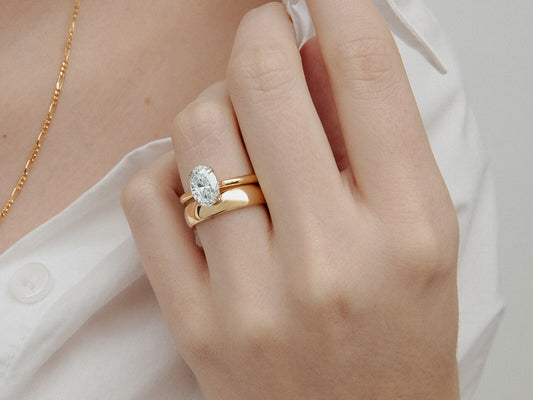
Near Colourless Diamond Grades
G, H, I, and J grades are considered near colourless. They may show slight warmth but appear colourless face-up and nearly colourless face-down. In yellow or rose gold settings, they may display slight colour traces, generally unnoticeable to non-professionals.
Near Colourless Diamond Value
Near-colourless diamonds are usually more affordable than colourless diamonds. The subtle differences between G, H, I, and J colours make them attractive, sparkling options that offer excellent value.

Faint Colour Diamond Grades
K, L, and M grades exhibit a warm tint visible to the naked eye. These are increasingly sought after, especially for yellow or rose gold vintage-style designs. CUSHLA WHITING carries faint brown diamonds in LMN colour for our champagne stones and in antique diamonds, KLM in faint yellow.
Faint Colour Diamond Value
Faint colour diamonds are generally more affordable than colourless and near-colourless options. While not recommended for those seeking a cool white diamond, they offer a unique, accessible choice for those who appreciate a slight tint.
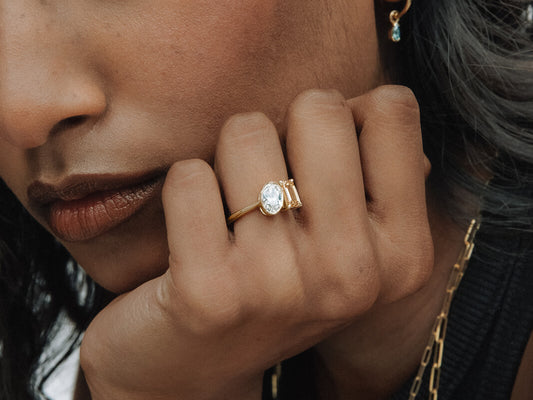
Very Light Colour Grades
Diamonds graded N-R are considered very light colour. These can be attractive and affordable, offering pastel tones that fall between colourless/white and fancy colour diamonds.
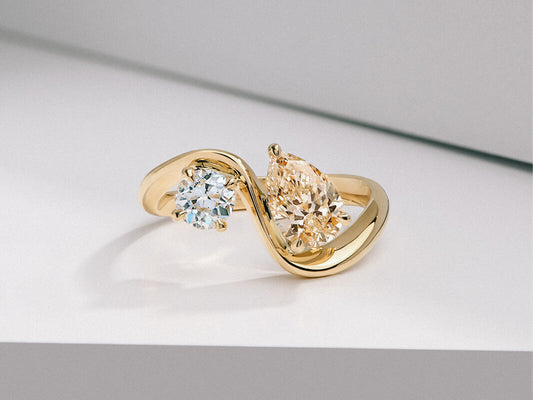
Light Colour Grades
Diamonds graded S-Z are considered light yellow in colour. They show substantial colour face-up or face-down, loose or mounted.
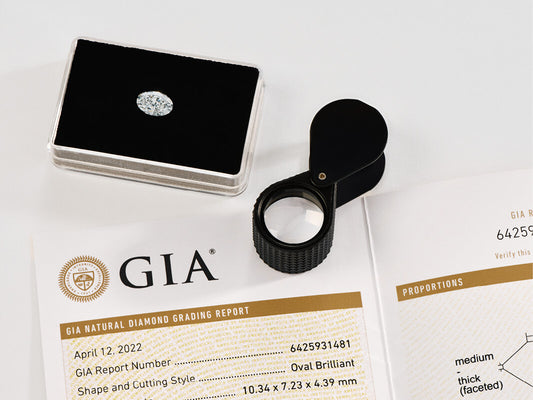
Diamond Colour Grading Process
GIA experts grade diamond colour by comparing stones to master stones of known color under controlled lighting on white paper. This process ensures precise and accurate colour description on the D-Z scale. The colour grade is then included in the diamond's certified grading report alongside other characteristics.
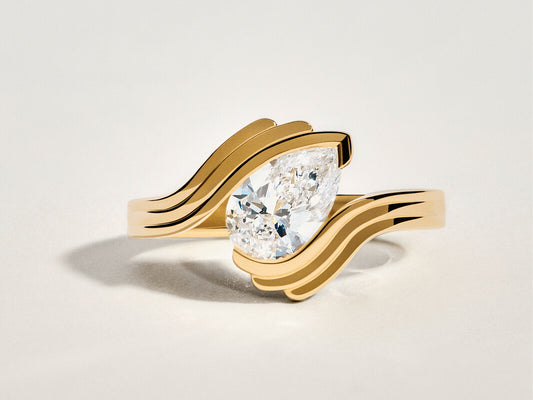
How Important is a Diamond's Colour?
Colour significantly impacts a diamond's price and appearance. While icy, colourless diamonds are traditionally coveted, many now prefer diamonds with warmer tints for their unique, timeless look. Balancing colour with the other 4 C's and your budget is key to finding your ideal diamond.
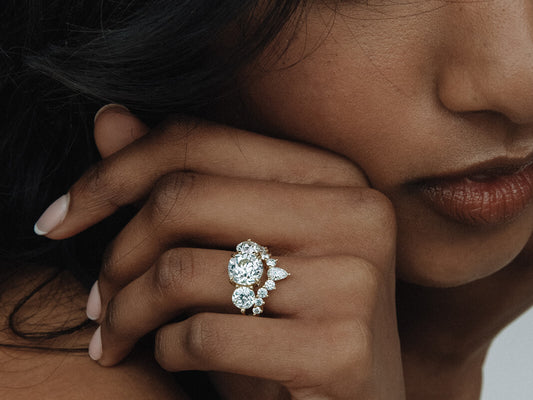
Should You Match Your Center Diamond Colour with the Side Stones?
While exact matching isn't necessary, consider how center and side stone colors interact. A warmer center stone may appear more tinted next to icy side stones, while a colourless center stone may look even icier next to warmer side stones. For a cohesive look, stay within 1-2 color grades.
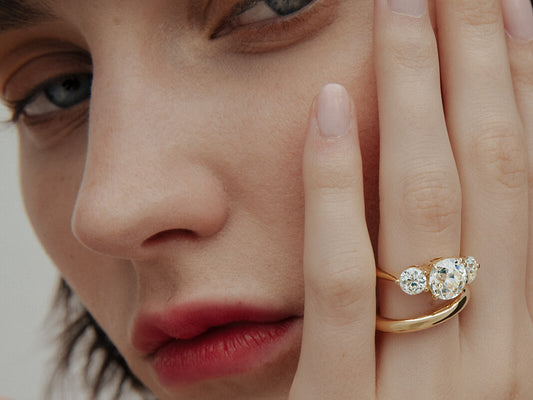
TIPS FOR CHOOSING DIAMOND COLOUR
SHAPE/CUT: A diamond's brilliance can mask or highlight its colour. Round brilliant cuts typically hide color best due to their light refraction properties. Pear and oval shapes may appear 1-2 grades lower in color than rounds, requiring higher grades for an icy white appearance.
CARAT: Larger diamonds tend to show more colour. For example, a two-carat J-colour diamond will appear more tinted than a half-carat J-colour diamond.
SETTING: Setting metal can impact a diamond's colour presentation. D-F diamonds are best in white gold or platinum to showcase their icy hue. Faint colour diamonds often look stunning in yellow or rose gold settings, which can complement their warm tones.
FANCY COLOURED DIAMONDS: Fancy-coloured diamonds fall outside the D-Z range and come in various hues. Unlike white diamonds, their value increases with colour intensity. The more vivid the colour, the higher the price, due to rarity. This excludes brown and grey, which are less commercially desirable in intense saturations.
DIAMOND COLOUR FAQ
It is rare for diamond fluorescence to impact the colour appearance of your diamond under normal lighting conditions. If your diamond is fluorescent, you should only be able to tell it is under direct UV lighting. Natural Daylight has UV so some diamonds with higher levels of fluorescence can appear whiter in natural daylight. Stones with very strong blue fluorescence and some with strong blue fluorescence can appear to have a bluish tint in natural daylight.
D is the rarest within the D-Z range. For fancy colours, intense red or vibrant orange are rarest.
Both diamond clarity and colour are important. Which one is more important depends on which quality factor is more important to you. Some people want an icy white diamond, whereas others prefer a warm colour diamond. In our view, as long as a diamond is eye clean the clarity will not affect the beauty or light performance of a diamond. For colour, there are many attractive diamonds within the champagne range and light yellow range which to many will be more attractive and appealing than a classic icy white diamond.
In round diamonds, D -G, in fancy cuts, D- F for customers wanting a white diamond. For antiques we normally source diamonds in the I, J K colour range which have a slightly warm hue. In champagne diamonds we normally source L - N colour for that attractive C1 - C2 champagne colour.






















